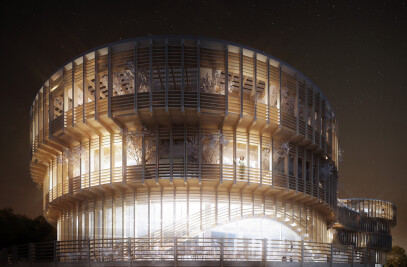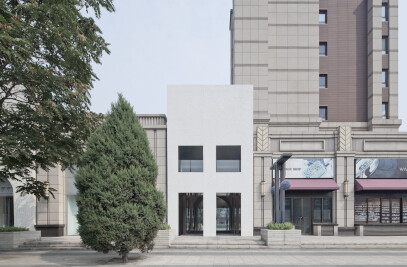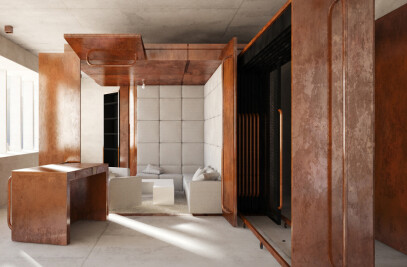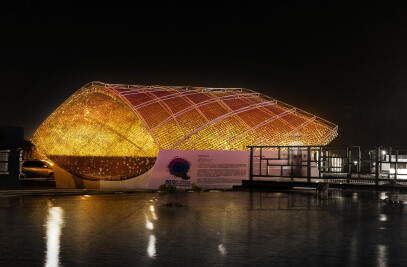For the Beijing design week we want to explore the power of a true ecological, modular building tool. Over the last year, we developed a structural system out of Bamboo. By adding and connecting new bamboo culms to the structure, it grows and becomes stronger to take on more loads of the building. Construction with bamboo has a large tradition in Asia and the southern region of China. The current state irresponsible city planning, pollution and economic crises asks to the architecture profession to rethink their process and sustainable materials like Bamboo, in combination with a smart way of construction methods are more valuable than ever.
Bamboo grows at a faster rate than any other natural building material (135cm per day) and has at the same time equal structural abilities as concrete or steel. Using bamboo in a smart and innovative way to create a modular building structure, which has the ability to grow in every direction is the base of the concept. Therefore we plant a bamboo Forrest near the city for the development. As bamboo has such a fast growth rate, the Forrest will grow in a fast pace and its culms can be used for construction within a short period of time. For every cane of bamboo used as a building material, 2 new bamboo trees needs to be planted to the forest instead, to secure a the demands of building elements in the long run and create a beautiful bamboo forest around the development. We see our Project strongly connect to the “Cradle to Cradle” movement, which proposes a holistic economic, industrial and social framework that seeks to create systems that are not only efficient, but also essentially waste free.
Therefore the building and the way bamboo is used as a structure is very much involved in a life-cycle of plants. A true ecological approach of building, which leaves no harm to the surrounding environment and therefore a counter-movement to a conventional city planning.
For the Beijing Design Week we build a small structure of 4 Modules, which can host lectures, discussions, exhibitions and an urban garden. Due to the joinery of the Bamboo, the pavilion and truly temporary, don’t leave any harm on the site and all elements can be reused after the Beijing Design Week as a shelter for a Farm at Pingyu near Beijing. There the structure will serve as a tent-structure for kids to learn farming, to explore a lifecycle of plants in combination with architecture and to spent a weekend in the shelter to stay overnight. We would like to explore the potential growth of ecological architecture and the potential it brings to city- and countryside-life. From small structures, to emergency shelters, to villages, vertical farming, bridges or city structures. All in Bamboo and in a sustainable building cycle.

































